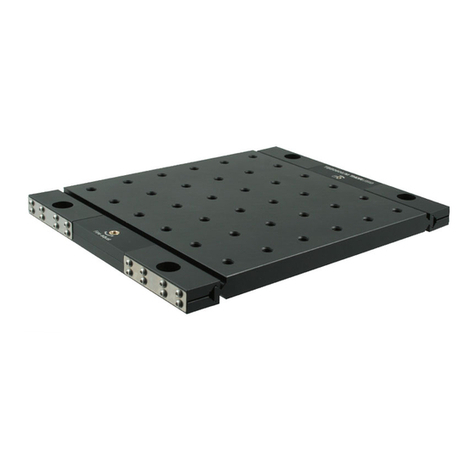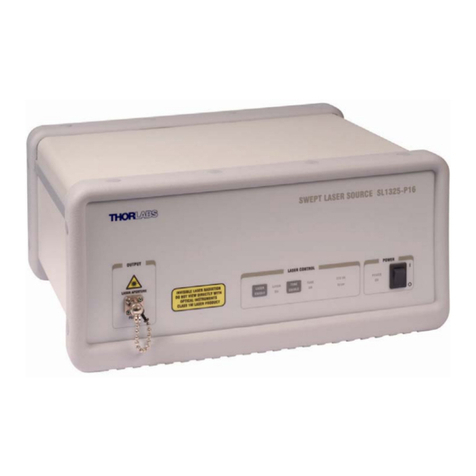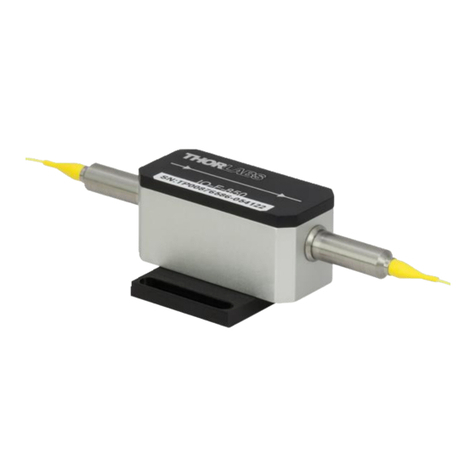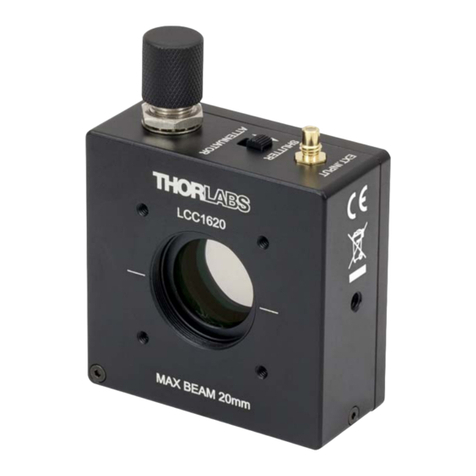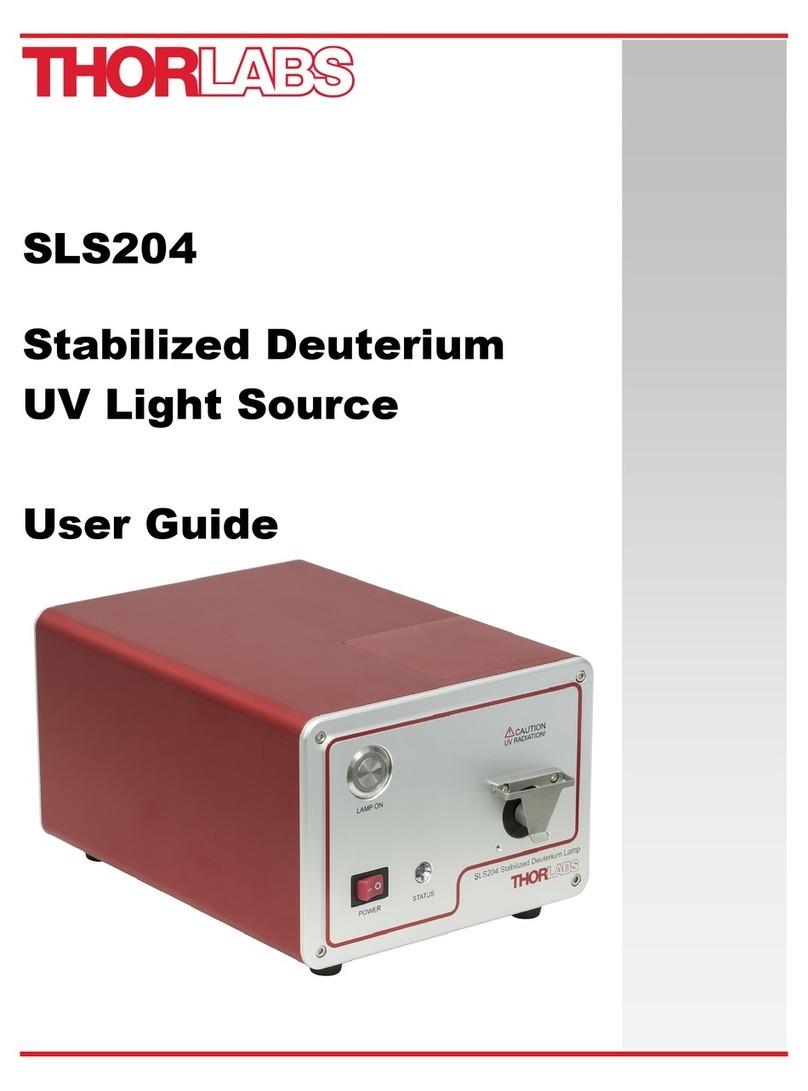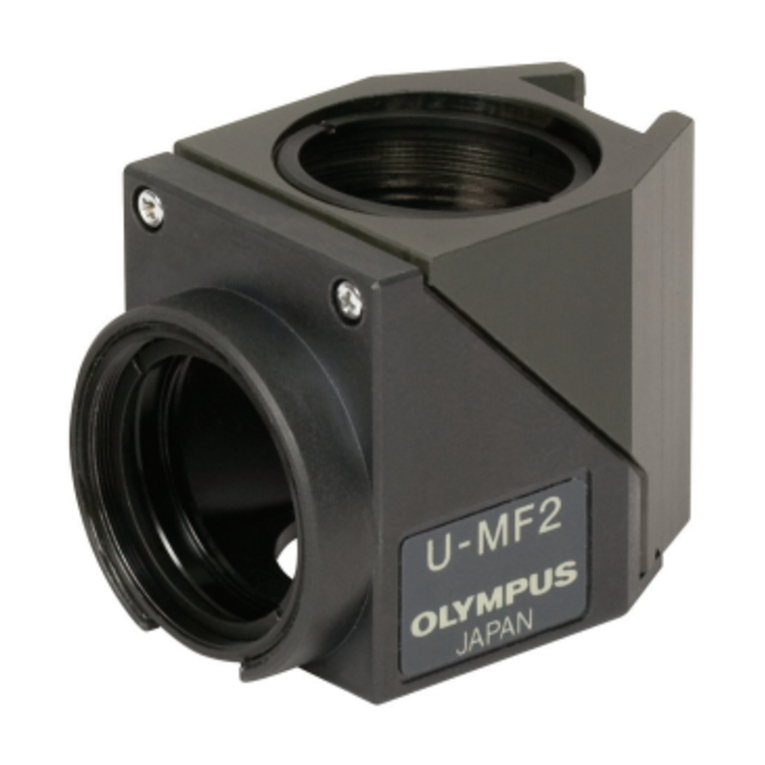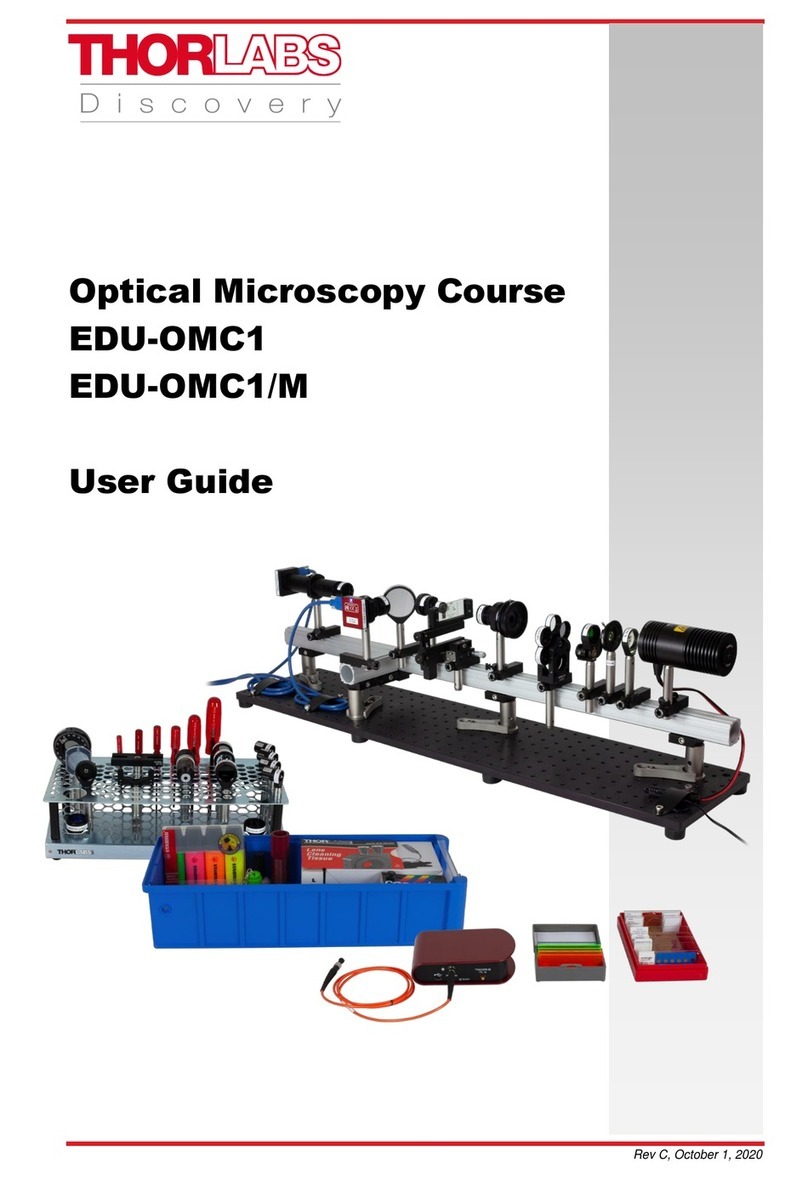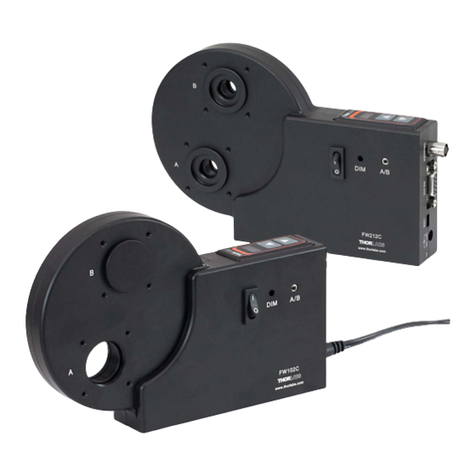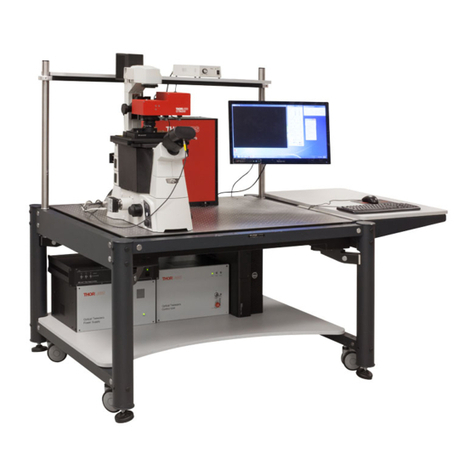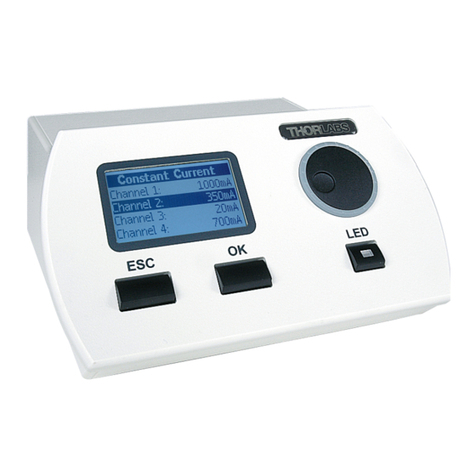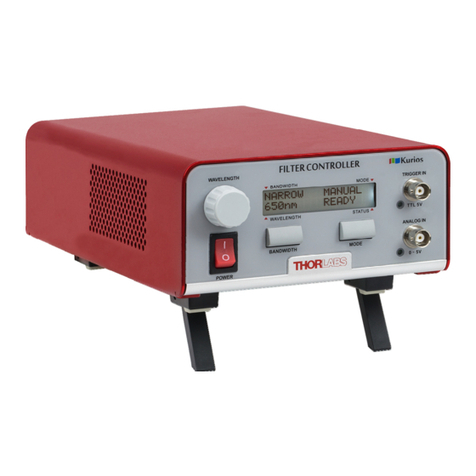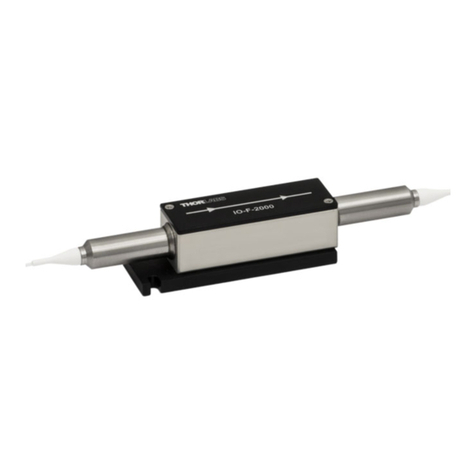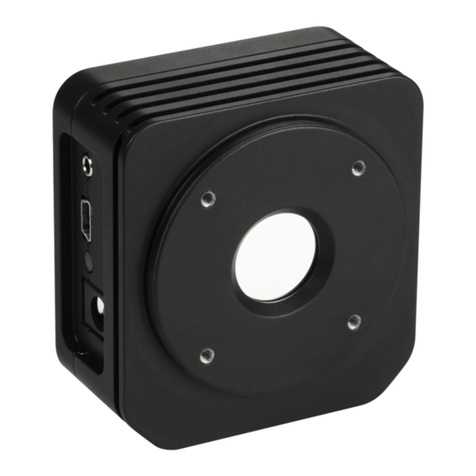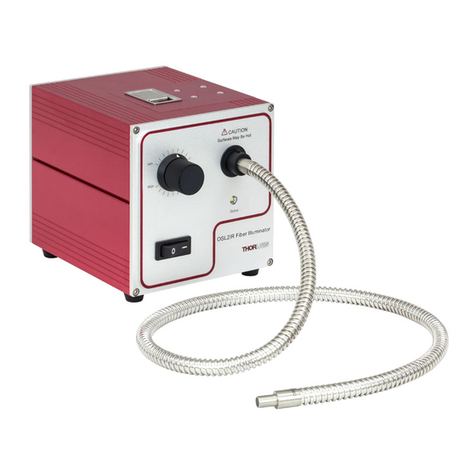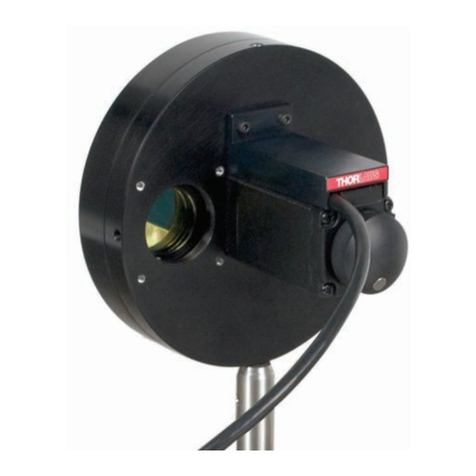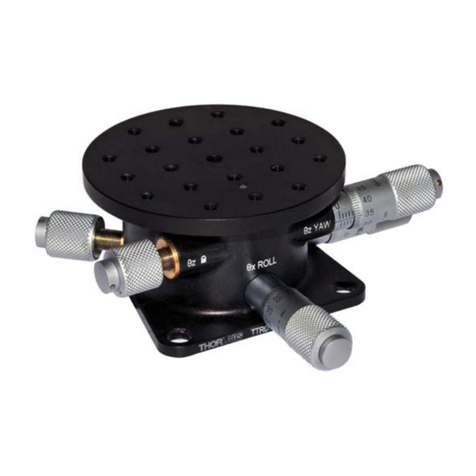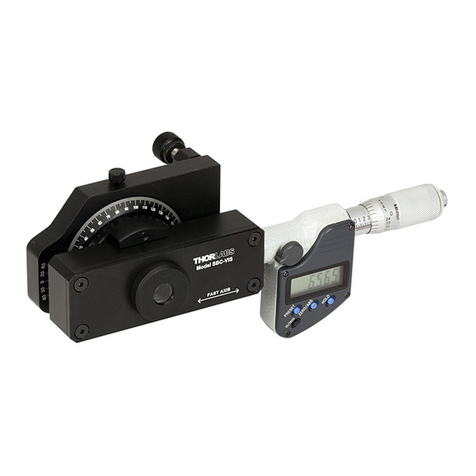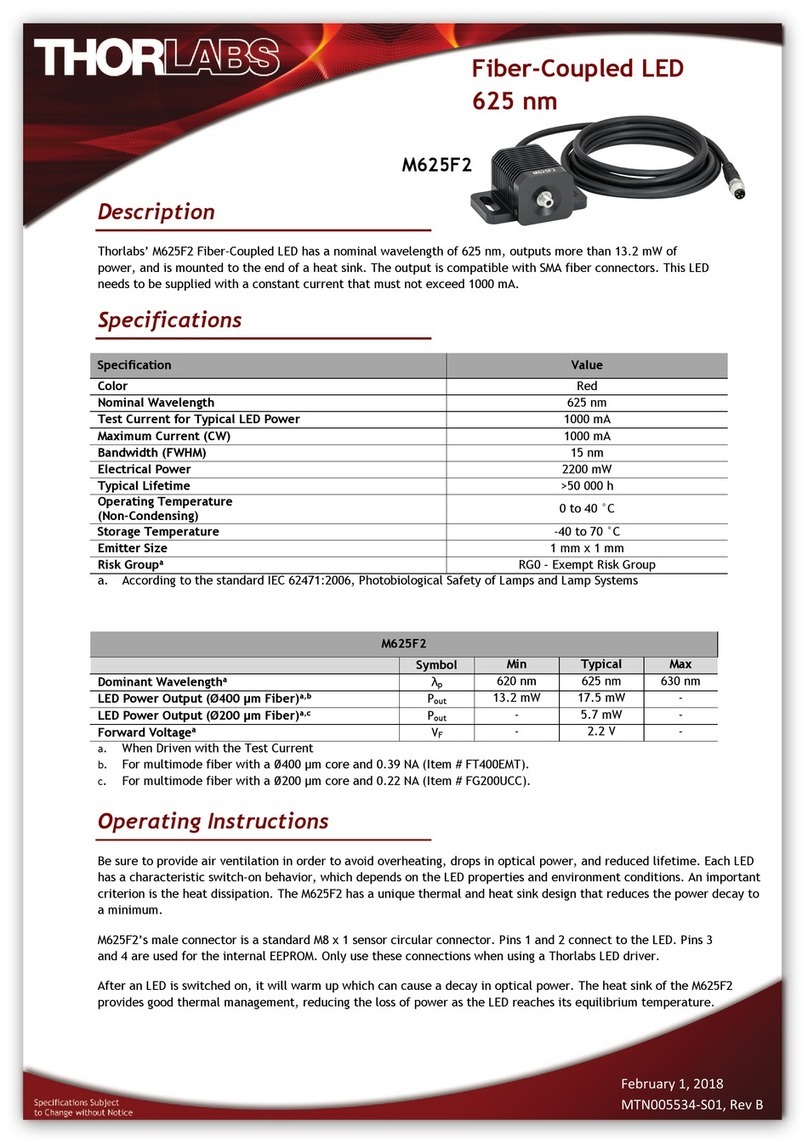
Raman Spectroscopy Bundle Chapter 1: General Information
MTN022733-D02
Page 1
1 General Information
This manual describes the use of the Thorlabs components for Raman Spectroscopy, a spec-
trograph, different front ends and adapters, suitable for varying applications.
Raman spectroscopy is a technique that detects and analyzes inelastic photon scattering,
known as Raman scattering. Because Raman scattering is material specific and provides a mo-
lecular fingerprint, Raman spectroscopy can be used to identify specific chemicals or mo-
lecules.
One challenge in Raman spectroscopy has long been the low signal-to-noise ratio (SNR) due to
the very weak Raman scattering signal. The Coded-Aperture (CODA) technology can overcome
the challenge of the low SNR as it uses a two dimensional matrix with a defined pattern of mul-
tiple slits instead of a single slit input aperture. This coded input aperture allows data acquisi-
tion from a larger sampling volume than a single slit input aperture. This in turn, enables higher
sampling rates and an increased SNR. Please find more general information on Raman spec-
troscopy and background on Coded-Aperture systems in the chapter Operating Principle .
RSB1(/M) Raman Spectrograph
The Thorlabs RSB1(/M) Raman Spectroscopy Base Unit features such a highly optimized spec-
trograph based on the CODA technology with a pseudo Hadamard mask of order 64 and an at-
tached CMOS camera (not removable). The geometric size of the Coded-Aperture's active area
is 3.159 mm x 2.304 mm. Due to the Coded-Aperture technology and the spatial averaging in
the analysis, the Thorlabs Raman spectrograph RSB1(/M) is superior in the analysis of complex
mixtures.
Beyond the Coded-Aperture technology, the RSB1(/M) Raman Spectroscopy Base Unit is de-
signed for 785 nm excitation and a detection range of 500 cm-1 to 1800 cm-1. The RSB1(/M)
Base Unit can be purchased in an imperial (RSB1) or metric version (RSB1/M). For the purpose
of this manual, RSB1(/M) refers to both versions.
To assemble a full Raman spectroscopy system, the RSB1(/M) needs to be equipped with a
front end which collects the scattered Raman signal for detection and analysis, an excitation
light source 785 nm, and a PC.
Note Excitation between 680 nm and 785 nm is possible with your system if your RSBR1(/M)
or RSBC1(/M) was built in 2023 or later. RSBR1(/M) and RSBC1(/M) built in 2021 or 2022 will
require a different bandpass filter for using a shorter wavelength excitation. For this, please
contact techsupport@thorlabs.com. Please be aware that the detection range in wavenumbers
(cm-1) changes when using a different excitation wavelength while the spectral range of the
spectrograph RSB1(/M) remains unchanged.
Thorlabs Front Ends RSBR1(/M) and RSBC1(/M)
Thorlabs offers different front ends for variable applications:
RSBR1(/M) reflective front end for analysis of powder and solid samples:
RSBR1(M) carries the optical modules which guide the laser light to a solid or powder sample,
collect back-scattered Raman signal from the sample and focus it onto the RSB1(/M) input
aperture. For laser light input, the RSBR1(/M) features an FC/PC connector. A sample table is
provided to place a specimen at the optimal focal plane. The RSBR1(/M) even allows to ana-
lyze samples that are transparently wrapped. The wrapping component can be eliminated from
the output spectrum provided that the focal volume is located within the sample.
